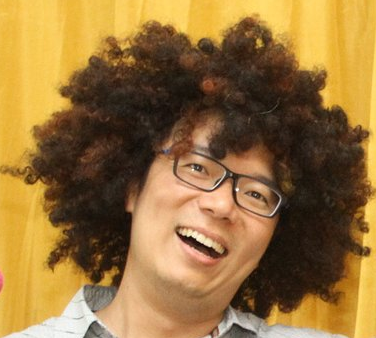This post provides an answer for Exercise 2 from Chapter 2 of Bayesian Data Analysis (BDA) 3rd Edition. Let’s state the problem from the beloved book.
Consider two coins, $C_1$ and $C_2$, with the following characteristics:
\[\begin{align} \Pr(\text{head} \mid C_1) &= 0.6, \\ \Pr(\text{head} \mid C_2) &= 0.4. \end{align}\]Choose one of the coins at random and imagine spinning it repeatedly.
Here is the question:
Given that the first two spins from the chosen coin are tails, what is the expectation of the number of additional spins until a head shows up?
To simplify our writing, we denote $\text{head}$ and $\text{tail}$ as $H$ and $T$ respectively. Therefore, we have
\[\begin{align*} C_1 &\rightarrow \Pr(H \mid C_1) = 0.6 = \frac{3}{5}, \tag{1}\label{eq:c1}\\ C_2 &\rightarrow \Pr(H \mid C_2) = 0.4 = \frac{2}{5}. \tag{2}\label{eq:c2} \end{align*}\]
If we read the problem carefully, we may find that the problem consists of two steps as depicted in $\pmb{\text{Figure 1}}$. Particularly, random variable $N$ is a geometric distribution which has a probability mass function such that
\(\begin{equation} \Pr(n) = (1-C_i)^{n-1} C_i \tag{3}\label{eq:pmf-geometri} \end{equation}\) where $C_i$ depends on either $C_1$ or $C_2$.
Now, let us compute \(\begin{equation} E(N \mid TT) = ? \tag{4}\label{eq:problem} \end{equation}\) as shown
\[\begin{align} \text{E}(N \mid TT) &= \int N \, \Pr(N \mid TT) \, dN && \text{by definition} \tag{5}\label{eq:compute-1} \\ &= \int \int N \, \Pr(N, C \mid TT) \, dC \, dN && \text{by Bayes rule} \tag{6}\label{eq:compute-2} \\ &= \int \int N \, \Pr(N \mid TT,C) \Pr(C \mid TT) \, dC \, dN && \text{by conditional probability} \tag{7}\label{eq:compute-3} \\ &= \int \underbrace{\int N \, \Pr(N \mid TT,C) \, dN}_{\text{E}(N \mid TT, C)} \, \Pr(C \mid TT) \, dC && \text{just rearranging} \tag{8}\label{eq:compute-4} \\ &= \int \text{E}(N \mid TT, C) \, \Pr(C \mid TT) \, dC && \text{by expectation definition} \tag{9}\label{eq:compute-5} \\ &= \sum_{i=1}^2 \text{E}(N \mid TT, C_i) \, \Pr(C_i \mid TT) && \text{since }C \text{ is discrete .} \tag{10}\label{eq:compute-6} \end{align}\]Recall that $N \sim$ geometric distribution; accordingly,
\[\begin{align} \text{E}(N \mid TT, C_i) &= \text{E}(N \mid C_i) && \text{whether we have }TT\text{ as conditional or not} \tag{11}\label{eq:expectation-1} \\ &= \frac{1}{C_i} \tag{12}\label{eq:expectation-2}. \end{align}\]We proceed from Equation \eqref{eq:compute-6} as shown
\[\begin{align} \text{E}(N \mid TT) &= \text{E}(N \mid TT, C_1) \, \Pr(C_1 \mid TT) + \text{E}(N \mid TT, C_2) \, \Pr(C_2 \mid TT) \tag{13}\label{eq:final-1} \\ &= \frac{1}{C_1} \Pr(C_1 \mid TT) + \frac{1}{C_2} \Pr(C_2 \mid TT) \tag{14}\label{eq:final-2} \\ &= \frac{1}{C_1} \underbrace{\frac{\Pr(TT \mid C_1) \, \Pr(C_1)}{\Pr(TT)}}_{\text{Part 1}} + \frac{1}{C_2} \underbrace{\frac{\Pr(TT \mid C_2) \, \Pr(C_2)}{\Pr(TT)}}_{\text{Part 2}} \tag{15}\label{eq:final-3} \\ \end{align}\]Next, let’s compute $\text{Part 1}$ which looks like
\[\begin{align} \frac{\Pr(TT \mid C_1) \, \Pr(C_1)}{\Pr(TT)} &= \frac{Pr(TT \mid C_1) \, \Pr(C_1)}{\Pr(TT \mid C_1) \, \Pr(C_1) + \Pr(TT \mid C_2) \, \Pr(C_2)} && \text{expanding }\Pr(TT) \tag{16}\label{eq:part-1-1} \\ &= \frac{\left( \frac{2}{5} \right) \left( \frac{2}{5} \right) \left(\frac{1}{2} \right)}{\left( \frac{2}{5} \right) \left( \frac{2}{5} \right) \left( \frac{1}{2} \right) + \left( \frac{3}{5} \right) \left( \frac{3}{5} \right) \left( \frac{1}{2} \right)}. \tag{17}\label{eq:part-1-2} \\ \end{align}\]Similarly, we also calculate $\text{Part 2}$ in the following:
\[\begin{align} \frac{\Pr(TT \mid C_2) \, \Pr(C_2)}{\Pr(TT)} &= \frac{\Pr(TT \mid C_2) \, \Pr(C_2)}{\Pr(TT \mid C_1) \, \Pr(C_1) + \Pr(TT \mid C_2) \, \Pr(C_2)} && \text{expanding }\Pr(TT) \tag{18}\label{eq:part-2-1} \\ &= \frac{\left( \frac{3}{5} \right) \left( \frac{3}{5} \right) \left( \frac{1}{2} \right) }{ \left( \frac{2}{5} \right) \left( \frac{2}{5} \right) \left( \frac{1}{2} \right) + \left( \frac{3}{5} \right) \left( \frac{3}{5} \right) \left( \frac{1}{2} \right) }. \tag{19}\label{eq:part-2-2} \\ \end{align}\]Finally, we are able to compute Equation \eqref{eq:problem} as
\[\begin{align} \text{E}(N \mid TT) &= \frac{1}{C_1} \, \text{Part 1} + \frac{1}{C_2} \, \text{Part 2} \tag{20}\label{eq:final-answer}\\ &= \frac{1}{3/5} \, \text{Part 1} + \frac{1}{2/5} \, \text{Part 2} \\ &= 2.2436 && \text{utilizing Eq. }\eqref{eq:part-1-2}\text{ and Eq. }\eqref{eq:part-2-2} \\ &\approx 3 && \text{rounding the number.} \end{align}\]This means that in order to find a head after we have two tails regardless the coin we choose, we need $\pmb{3}$ more throws on average.
